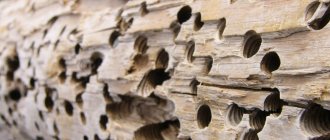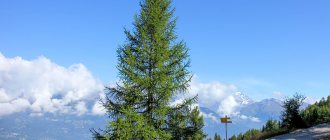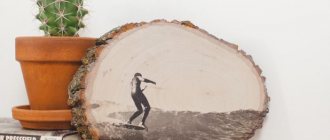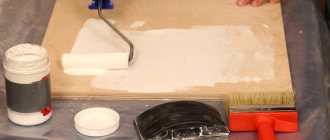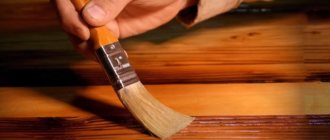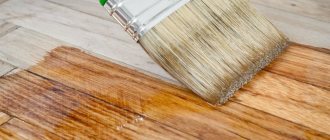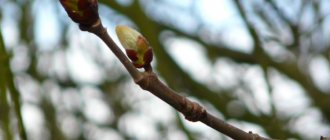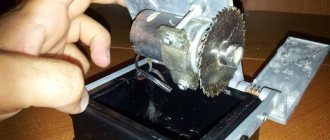Category: Open ground plants
Coniferous plants will truly decorate any garden. But at the same time, after a dozen or two years, they can easily displace their owners from their own plot, since, growing slowly in the first years, they will subsequently begin to grow 1 m per year, growing in all directions. So keep that in mind.
The first question asked by gardeners who are planning to plant a spruce tree on their property is: where will be the best place for it? You can plant spruce trees along the fence as a green fence. It will hide you from the eyes of people who drive or walk along the streets of your garden. Spruce trees should not be planted on the south side, as they will provide a lot of shade, although, in principle, this can also be done if you regularly shorten their tops, not allowing them to reach too great a height. But it is better to plant them outside the site, on the north side, behind a ditch at the very edge of the road that passes by your site. In addition, such a living fence will perfectly protect your garden from the north wind.
If you plant spruce trees as a green fence, then they need to be planted at a distance of 1.5 m from each other.
Spruce has one peculiarity: if it is allowed to grow upward freely, it will begin to shed needles from the lower tiers if it does not have sufficient space for development. If you want your spruce to be lush from top to bottom, then you must cut off the top of the spruce at some point. Let's say you let it grow to a height of 2.5 m. In the spring a young and green shoot will appear, the top begins to grow further, and you simply twist this shoot out; While the needles on it are still very soft, this is very easy to do. For spruce this operation is quite harmless. You break it off no matter how high it grows. As soon as you destroy the apical point of growth, the nearest dormant buds at the base of the broken sprout will immediately begin to grow. One of these shoots will try to replace the top and begin to grow vertically, and you will break it off again. You will stop all attempts by the spruce tree to grow a new top every spring. If you constantly break off the young and green shoot at the top of the spruce tree, then it will become thicker, the branches will become very fluffy and green, the needles will not fall off from the lower branches, and they will not dry out. But you should not trim the ends of the branches, since, as a rule, this leads to drying out of the entire branch.
Spruce trees should not be planted along the border with neighbors. Trees will provide shade to neighbors and interfere with neighboring plants.
In general, it is not recommended to plant spruce on the site, because its root system is superficial and therefore very extensive, and it will spread in breadth and interfere with your garden plants, which will be located even 10-15 m from the spruce.
Spruce has a very interesting feature: it does not like the proximity of other plants and will try to survive them from the adjacent territory. You can, of course, plant a spruce on the site, but then you must definitely limit its root system. You can mark out some area and every year chop off its roots with a shovel, trying to go beyond the designated boundaries. Since spruce has a shallow root system, you don’t have to dig deep, but it’s still tedious work, and you can skip a couple of times, but it will very quickly extend its tentacles-roots to all your plants. It’s easier to do this: if you have an old concrete ring, for some reason not used to create a well, you can bury it to 90-100 cm. If there is no ring, then you can dig a hole, make formwork and pour a concrete square box without bottom. You can also bury the slate, but the spruce roots will gradually destroy it. If you try to bury iron, it will rot in 8-10 years, and the roots will stretch further.
The planting hole should be square, approximately 1 x 1 m. You can add back the soil that you dug, you do not need particularly fertile soil, you need the spruce to grow slowly, in poor soil. And it will grow, don't worry. Spruce is very hardy and also shade-tolerant. Therefore, if you have 4 apple trees, then you can only plant a spruce in the center to a limited extent. With its rather pungent smell, it will successfully protect your apple trees from flying pests of apple trees, since the spruce smell will disorient them: they seem to be flying towards the smell of their nurse - the apple tree, but then some other suspicious smell is mixed in. Fearing to leave their offspring on such an apple tree, pests, as a rule, fly past.
But if you want to plant a blue spruce on your site, then it will need a sunny place. Blue spruce grows much slower than ordinary spruce, but its root system will have to be limited or planted in a place where it will not interfere with the rest of the inhabitants of your garden. By the way, you should not pluck out the top of a blue spruce, since its lower branches do not dry out.
Spruce trees cannot be planted in the fall, as they usually die.
You can propagate spruce from seeds. To do this, you need to collect cones that have not yet opened in the fall. At home, you need to put them on a sheet of paper; they will dry out quite quickly, open up, and seeds will spill out of them. Spruce seeds are small, but with an impeller. You will plant these seeds before winter. You need to find a special place for planting and be sure to check that there are no weeds, and for this you need to prepare the soil specially.
Mix a bucket of peat and half a bucket of sand, add a liter jar of ash. Mix all this, pour the mixture completely into the prepared hole, moisten the seeds, add a layer of regular soil on top, about 1 cm of pine cones - and that’s it. These seeds will undergo natural winter stratification and will sprout in the spring. True, it happens that they don’t sprout in the first year, don’t worry - they will sprout in a year.
First, one small, thin needle emerges; it is very clearly visible, as it is different from anything else. You can’t touch it, wait a year or two: the tree must grow. When the tree has a small stem with three or five needles, you can replant it in the spring. That is, it will be in two years. But you shouldn’t keep it for more than two years; you need to replant it. You can use the bayonet of a shovel to pry the plant and replant it. The main thing is that you carefully plant the stems; you need to plant them at the level of the root collar.
But simple Christmas trees should not be planted using seeds this way. It’s easier to dig up a very small Christmas tree in the forest. You take a lump of earth on the bayonet of a shovel, take out the tree along with the soil, put it on a cloth and transport it.
And also remember this point: when the tree is small, there is no need to orient it according to the sun. If you dig up a large spruce, about 1.5 m or more, then when replanting you need to maintain the orientation towards the sun, because such a fir tree has already adapted to a certain location. In the south, its needle is more resistant to falling off from sunburn, the trunk already has annual rings - narrower in the north, and wider in the south. Do the following: just tie a cloth on the south side, and when you plant it in place, leave the cloth on the south side so that it is oriented to the south.
Reproduction methods
Glauca globosa propagates by cuttings, grafting or seeds. Each method has its own advantages and disadvantages. In order to properly graft a spruce, certain skills and dexterity will be required. When propagating spruce using seeds, you will have to be patient to get the desired result. As a rule, gardeners purchase ready-made seedlings or use the propagation method using cuttings.
Cuttings
Cuttings can be carried out at any time of the year, except winter. A young eight-year-old spruce is suitable for cuttings. After cutting cuttings of about 10 cm from it, they are placed in a growth stimulator.
Maintain in it for several hours and then plant at an angle in prepared soil, including a drainage layer, soil substrate (ready store-bought or independently prepared from peat, sand and perlite in different parts).
The planted cuttings are covered with film and placed in a shaded place. The planted cuttings are watered with water at room temperature; as necessary, the soil around them needs to be loosened and weeds pulled out. After a year, the cuttings will take root thoroughly. After this, they are transplanted into a greenhouse, where they are cared for for another 4 years, after which they are planted in a permanent place of growth.
Growing seedlings
If you are going to sow blue spruce seeds in containers (pots or containers), be sure to prepare a special soil mixture: high-moor peat with fertilizers (for 5-6 kg of peat - 35 g of limestone flour and 20 g of ammophosphate). Then fill the containers with the mixture and place them in holes in the greenhouse so that the top of the containers is at soil level, in other words, bury the pots. Next, sow the seeds in them to a depth of 1.5 cm and cover with film.
Growing seedlings
Place the containers in a warm place out of direct sunlight. Spray as the soil dries. When the sprouts hatch and become visible, the containers are opened slightly so that the plants are properly ventilated. In the summer, the pots are taken out into the fresh air, under the shade of large trees, and in the winter they are returned to a room with a temperature of 10-15 º C.
Young plants should be planted next spring, in May, when the soil warms up.
Spruce trees - how quickly they grow, review of dwarf blue, prickly Glaucoma, Globoza, photo, video
Any person at least once in his life has thought about the beauty of the nature around us.
Evergreen cedars and spruces, mighty oaks, slender poplars and cute birches surprise you with their beauty. How can you spend a pleasant time in a coniferous forest, admiring the exclusive aroma? To experience this kind of pleasure more often, most people plant the beautiful evergreen spruce on their own property.
Why is this tree so beautiful? Its own appearance, good properties, and also ease of care.
Enjoyment in the shade of an evergreen spruce
Every person at least once in his life has thought about the beauty of the nature around us.
Evergreen cedars and spruces, mighty oaks, slender poplars and lovely birches amaze with their splendor. How pleasant is it to spend time in a coniferous forest, enjoying the unique aroma? In order to experience such pleasure as often as possible, many people plant the beautiful evergreen spruce in their garden.
What is so attractive about this tree? Its appearance, beneficial properties, and ease of care.
Subtleties of care
Despite its excellent endurance and unpretentiousness, spruce still requires basic care. With just a little effort, you can grow a real beauty.
Watering
In dry weather, the tree should be watered 2 times a week, pouring 2 buckets of water under the plant.
In rainy weather, watering is reduced to a minimum. Evening time is preferable for watering.
The water should sit for several hours and be at room temperature.
Fertilizer
In spring and autumn, the young tree should be fed with a special fertilizer for coniferous plants. During the first week, watering with a root growth stimulator is recommended, and the branches are sprayed with Epin or Zircon. It is enough to feed an adult tree once a year in the spring.
It is contraindicated to use humus, manure and urea as fertilizer.
Loosening and mulching
After watering, the soil around the plant should be carefully loosened, not forgetting that the spruce root system is very close to the soil surface. Before mulching with peat, sawdust or compost, weeds should be removed around the trunk, which can cause diseases and attract harmful insects.
When mulching, it is recommended to carefully tie the shoots with ropes, wrapping them with covering material. In the spring, you should carefully remove the cover, avoiding sudden penetration of sunlight onto the young needles. This could cause her burns. Initially, you can cover young trees with sun-protective mesh fabric.
Trimming
In early spring, sanitary pruning of branches broken and damaged by snow cover is carried out. To give the spruce a certain shape, decorative pruning is done no more than once a year.
Preparing for winter
An adult tree does not require special care in winter and can withstand 35-degree frost. And for the first 2 years, it is better to cover young spruces using traditional methods.
In winter, all caring for spruce trees involves shaking off the abundant snow cover from the branches.
Recommendations
- A. Farjeon (2013). " Picea pungens
".
IUCN Red List of Threatened Species
.
2013
: e.T42333A2973433. Doi:10.2305/IUCN.UK.2013-1.RLTS.T42333A2973433.en. - " Picea pungens
: Blue spruce, Colorado blue spruce or green spruce (Pinaceae - pine family)." - “Blue spruce, Picea pungens
Engelm., Colorado blue spruce.” treescanada.ca. Retrieved 2018-11-20. - RHS AZ Encyclopedia of Garden Plants
. United Kingdom: Dorling Kindersley. 2008. p. 1136. ISBN 978-1405332965. - ^ a b c
USDA Retrieved 2012-12-01. - ^ a b
Barnes, Burton V.;
Warren J. Wagner, Jr. (September 15, 1981). Trees of Michigan: A Guide to the Trees of Michigan and the Great Lakes Region
. Biological Sciences Series. University of Michigan Press. ISBN 978-0-472-08018-2. - Vedel, H.; Lange, J. (1962). Trees and bushes
. Methuen & Co., pp.119–120. ISBN 978-0416617801. - Harrison, Lorraine (2012). RHS Latin for Gardeners
. United Kingdom: Mitchell Beasley. p. 224. ISBN 9781845337315. - "State trees and state flowers." US National Arboretum. June 11, 2009 Archived from the original on 2010-12-06. Retrieved 2010-05-26.
- Conifers.org. access date 12/1/2012
- ^ a b
Gilman, Edward F.;
Watson, Dennis G. (05/01/2011). " Picea pungens
: Colorado spruce."
EDIS
. IFAS Information Service: University of Florida. Retrieved 2013-10-06. - Crenshaw, W. S. (2013, June 13). "Scaly insects attacking conifers." Colorado State University Extension. Retrieved 2013-10-05.
- Cesla, Bill (2013-04-19). "The spruce beetle threatens high mountain spruce forests." Colorado State University Extension. Retrieved 2013-10-05.
- Jones, John R. "Mixed Conifers of the Southwest. In the silvicultural systems of major US forest types." USDA, Agriculture Handboo
. - Alexander, Robert R. “Silviculture in the Central and Southern Rocky Mountain Forests. USDA Forest Service, Research Report RM-120.” Rocky Mountain Forest and Ridge Experiment Station, Fort Collins
. - Pearson, G. A. "Forest Types in the Southwest by Climate and Soil." USDA Technical Bulletin 247
. - Goor, A. Y.; Barney. Planting forest trees in and zones
. Ronald Press. - Watson, Gary W.; Sydnor. "The influence of root pruning on the root system of seedlings." Journal of Forestry
. - "AGM Plants - Ornamental" (PDF). Royal Horticultural Society. July 2022. p. 78. Retrieved April 25, 2022.
- "RHS Plant Breeder - Picea pungens
'Globosa'." Retrieved May 27, 2013. - Missouri Botanical Garden: Picea pungens
'Glauca Globosa' - Missouri Botanical Garden: Picea pungens
'Fat Albert' - Missouri Botanical Garden: Picea pungens
'Dilly Glaucy Jeans' - A Guide to Great Garden Plants: Picea pungens 'Glauca Pendula'
- "RHS Plant Breeder - Picea pungens
'Hoopsii'." Retrieved May 27, 2013. - "RHS Plant Selector - Picea pungens
Bonfire'". Retrieved May 27, 2013. - "Missouri Botanical Garden - Picea pungens
'Baby Blueeyes'." - "Washington State University - Picea pungens
'Baby Blueeyes'." - "West Montrose Farms Ltd. - Picea pungens
'Gentle Blue'." - W. Michigan-Dearborn: Ethnobotany Accessed 2012-12-01.
- ^ a b
Fechner, Gilbert H. "Blue Spruce." Retrieved 2018-11-22. - Mauk, Ronald L.; Henderson. “Forest Habitat Types in Northern Utah. USDA Forest Service General Technical Report INT-170.” Experimental station Mezhmontny forest and ridge
. - Moir, William H.; Ludwig, John A. "Classification of spruce-fir mixed conifer habitats in Arizona and New Mexico." USDA Forest Service, Research Report RM-207
. - Dixon, Helen (1935). "Ecological studies of the high plateaus of Utah." Botanical Bulletin
.
97
(2):272–320. Doi:10.1086/334554. JSTOR 2471603. - ^ a b
Fechner, Gilbert H. "Blue Spruce." Retrieved 2018-11-23. - ^ a b
Bates, Carlos C. "Forest Types in the Central Rocky Mountains as Influenced by Climate and Soils."
USDA Bulletin 1233
: 152p. - Pearson, G. A. "Forest Types in the Southwest by Climate and Soil." USDA Technical Bulletin 247
: 144 pp. - Pearson, G. A. "Forest Types in the Southwest by Climate and Soil." USDA Technical Bulletin 247
: 144 pp. - Goor, A. Y. (1977). "Planting forest trees in dry areas." Soil Science
.
124
(1): 504 p. Bibcode:1977 SoilS.124 ... 66C. Doi:10.1097/00010694-197707000-00012.
Diseases and pests
The diseases mainly affect young, weakened spruce trees. The risk group includes all plants during the first 2 years after transplantation, as well as those that grow too close to each other, with insufficient lighting or excess moisture.
Most often, blue spruce trees suffer from fungal diseases such as:
- rust of needles or cones, in which pads with red powder (fungal spores) are formed. They completely recolor the needles in the spring or form on the inside of the blades of cones that hang open on the tree for a long time;
Rust
- schnotte. With this disease, the needles become black or brown, and in the spring those needles that were damaged last year turn white;
- tracheomycosis wilt of spruce. Occurs as a result of rotting of the roots, while the needles turn red, turn brown and crumble, and the tree dies. Most often it develops during prolonged stagnation of moisture in the soil, especially at low temperatures;
- necrosis of the cortex. With this lesion, the bark darkens, dries, peels off, and growths or pads with fungal spores form on it;
- ulcerative cancer. Open ulcers form on the trunk, from which resin oozes, or closed ones form resin swellings.
Treatment for diseases: all damaged parts are removed from infected trees, the places of cuts and cuts are treated with garden varnish and watered at the root with a solution of fungicidal preparations.
Insects gnawing on needles and pests of bark and wood are combated with the help of the preparations “Karbofos”, “Rogor” and “Detis”.
Landing rules
Almost any place is suitable for planting, regardless of the presence of light there. The tree is unpretentious and can grow safely both in the shade and in bright light.
The only condition when choosing a landing site is to study the passage of groundwater. They should not approach the upper layers of the soil, where the root system of the plant will be located.
If it is difficult to find such a place, then a drainage layer of 20-30 centimeters should be provided to protect the roots.
Any soil is suitable for spruce, but sandy loam and loamy soil with low-medium acidity is preferable. Prerequisite: absence of swampiness and liming. Seedlings are planted in spring and early summer, from April to the end of July. As a rule, four-year-old seedlings are planted in a permanent place of growth. The crown of seedlings grafted on a trunk looks especially beautiful.
How to stop?
Having grown a tree to a certain height, home or professional designers often wonder how to limit the growth of a spruce tree while maintaining its decorative value.
Even if there is a tree on your site that was once dug up in the forest, it can be improved by regular pruning. But this must be done annually, without waiting for the crown and branches to become woody.
If you use the option of “cutting down” the crown to stop growing in height, the mature tree will look unsightly. Instead of one crown, several will grow, which will try to take a dominant position in crooked ways.
Cutting down the side branches will lead to bare branches, since the closer to the trunk, the fewer needles on the branches. But new buds don’t grow here.
To give the plant the desired shape and limit growth, you need to carefully monitor new shoots. In spring they actively begin to grow. They should not be cut off, but carefully torn off, turning them out of the bosom. This method is called pinching. In spring, young branches are very soft, and removing them without tools will not be difficult. The same method is used when forming a bonsai-style crown. Tools are not suitable here - only hand work with each branch.
Using the second method - cutting with manual or electric pruners, you can create living spruce shapes: a ball, a cone or a square. To use this method, you need to get a good tool so as not to crush the branches, namely: cut them. Regular sanitary cutting in order to maintain the existing height is carried out at the end of summer, before the onset of dormancy. In this case, the cuts will have time to tighten before the onset of frost.
The shoots are cut to one or two three times the total length so that the green mass from the entire tree is reduced by no more than 1/3.
If there is a need for spring pruning, then this should be done in early spring before the time of bud growth. If you follow all the recommendations, the Christmas tree will have the height and shape that you desire. And delight you with its beauty all year round. And in winter, decorated with New Year's lights and balls, it will create the best mood for the time of wish fulfillment.
See below for information on the growth of coniferous plants.
external reference
- Conifers.org: Picea pungens (blue spruce) description
- Lady Bird Johnson Wildflower Center NPIN - Native Plant Information Network
- Interactive distribution map of Picea pungens
- Picea pungens
– UC Photo Gallery
| Taxon identifiers |
|
| Authoritative control |
|
Popular varieties
Blue spruce has many varieties, but distinguishing them is not always easy. Among the botanical names you can find the following forms:
- 'Glauca' - which means "gray";
- 'Coerulea' - which translates as "blue";
- 'Argentea' - meaning 'silver'.
There are no clearly defined boundaries or rules. Most varieties are derived from a form called 'Glauca' in Latin. Which variety should you choose for planting in a group, which one to create an accent in the garden, and which one is best suited for a New Year’s tree? Let's try to figure this out.
Prickly spruce Glauka ('Glauca')
This tree is large in size, its crown is dense, has the shape of a wide cone with a diameter of up to 6–8 m and a sharp top. Every year the plant grows 30 cm in height and 15 cm in width. In adulthood, the height of this variety of blue spruce can reach 25 m, and the diameter of the trunk is 1.2 m. Under natural conditions, the tree lives up to 400 years.
The needles of Glauka are hard, prickly, steel-blue in color, the length of the needles reaches 2–3 cm. With age, the color of this spruce variety becomes brighter, silver-blue. The thorny branches are arranged horizontally and are decorated with cylindrical cones that come in different colors ranging from light green to brownish-brown. The cones reach 6–15 cm in length.
This variety of blue spruce tolerates frost well and is unpretentious to the soil. It is not afraid of gas pollution, dust, soot and easily takes root in city conditions. Glauka is used to create landscape compositions, form alleys and decorate city buildings and private farmsteads. Blue spruce easily tolerates various changes in shape with the help of pruning; hedges can be created from a group of individuals planted in a row. The variety with the botanical name 'Glauca' is widely used for decorative purposes. This tree is most often used as a New Year tree.
This variety of blue spruce tolerates frost well and is unpretentious to the soil.
Gray spruce 'Coerulea'
This is a dwarf variety with short dove-blue needles. It grows quite quickly for a dwarf tree: from 15 to 20 cm per year. First functions as a shrub, then turns into a tree. At the age of 10 years it usually reaches 1.5 m in height and 0.7–1.0 m in diameter. The maximum possible height of this variety is 5 m, and the crown diameter is 2.5 m. A young plant has a dense, wide-conical crown, while an adult has a conical crown.
The cones are pale brown, shiny, with wavy, rounded scales, their size does not exceed 3.5–5 cm. The cones grow only on the branches of mature trees. The length of the needles is 1–2 cm, in the light it appears blue, in the shade it turns green. When you rub the needles between your fingers, a characteristic smell appears, completely different from spruce. The variety of prickly spruce 'Coerulea' is very frost-resistant; it does not need to be covered for the winter. It grows best in places with plenty of sun, but partial shade will do. It is not recommended to plant this plant in the shade, since in this case the crown of the tree will lose its density and the needles will turn from blue to green.
Prickly spruce 'Coerulea' prefers moderately moist, well-permeable, loamy or sandy soil. It can grow in more severe conditions, even tolerates rocky soil, but it will develop worse. In hot, dry weather, this plant needs regular watering, as well as sprinkling along its crown. This procedure is best performed in the morning or evening. Spruce 'Coerulea' is used for single and group plantings in parks, gardens and city squares. It is often included in various landscape compositions, where it looks especially impressive.
This is a dwarf variety with short dove-blue needles.
Prickly spruce 'Argentea Pendula'
This prickly blue spruce has an unusual crown shape. Its branches densely cover the trunk, forming a cone, and the lowest branches stretch to the ground. Because of this, they are called “weeping”. The tree grows quite quickly - it adds 10-12 cm per year. Ten years after planting, the plant has a height of about 2 m. In adult individuals, the height reaches 8-10 m. The color of the needles gradually changes with age - turning from soft green to gray. blue. The needles of this variety are not prickly, but soft and long: about 40 mm in length and 1.5 mm in width. The cones are purple-red in color and have an elliptical, elongated shape. They grow vertically upward. By autumn their color changes and becomes brown.
When planting, you need to take into account that the 'Argentea Pendula' variety loves sunny and sheltered places from the wind. It grows well in fertile, easily drained soil and does not take root well in clay soil. This variety of prickly blue spruce easily tolerates frost and any air pollution.
The variety 'Argentea Pendula' is widely used for decorative purposes; plants are planted both in groups and individually. This variety is also suitable for creating a hedge. Blue spruce will look good against the background of administrative buildings, in city parks, squares and private gardens.
This prickly blue spruce has an unusual crown shape.
Prickly spruce 'Hermann Naue'
This is a dwarf variety. The plant has a very dense, prickly crown in the shape of a flat ball, the diameter of which does not exceed 1–2 meters. At the age of 10 years it usually grows to a size of 60x80 cm. With age, the shape of the crown changes and begins to resemble a wide cone. The 'Hermann Naue' variety has stiff, thickened branches and spiky needles of a beautiful gray-blue-green color. Even at a young age, many reddish cones appear on the branches, which after drying become pale brown.
'Hermann Naue' loves plenty of sun. It prefers to grow on chernozems of steppe zones or peat soils of northern regions, where conditions are closest to natural. This variety of blue spruce can also grow on rocky, excessively wet or dry sandy soils, but during periods of prolonged drought it requires periodic watering and sprinkling along the crown.
The 'Hermann Naue' variety is suitable for planting on rocky hills, in gardens and rock gardens, where it looks especially good in composition with other deciduous or coniferous plants. It is also used as a container plant to decorate a patio, deck or porch steps.
Even at a young age, many reddish cones appear on the branches.
There are many other varieties of blue spruce, but no matter which variety you choose, it will always be a pleasant addition to your garden and will undoubtedly brighten up any cityscape.

